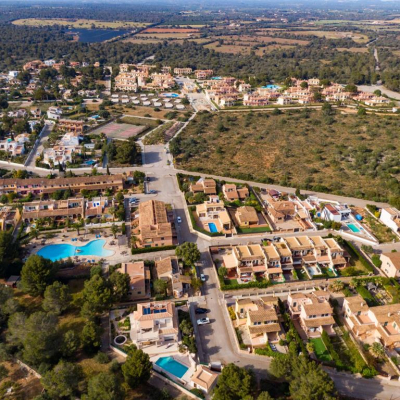Getting Around in Spain

Roads
The Spanish national highway system is the fourth longest in the world, crisscrossing Spain with more than 15,150 kilometers of national highway, while the country tops 681,000km in total.
Highways in Spain are maintained by the Ministerio del Interior, supervised by the Departamento General de Tráfico and patrolled by the Guardia Civil and the Policia Nacional, two arms of the police hierarchy in Spain. The Departamento General de Tráfico is also responsible for reporting the number of cars in circulation, road fatalities and puntos negros, which are dangerous stretches of national and local highways.
The six National Highways begin with A- and are followed by a single number. For Example, the A-2 Highway travels from Madrid east to Barcelona. These roadways are typically motorways, and beginning from Kilómetro 0 in the center of Madrid. All major distances are measured from this spot in la Plaza del Sol.
Regional Highway conditions will vary by region. Markings will be the first letter of the region's name, followed by two numbers. The A-92 in Andalusia connects Seville to Granada and Almería, for instance. Municipalities also have their own motorways, though they tend to be two-lane and not as well kept.
Highway signs in Spain are equivalent with those throughout the rest of the European Union, and any driving license issued by a member country is valid in Spain. Some countries outside of the EU also have agreements for circulation (the USA, however, does not). Identification plates are marked with an E for España.
Speeds depend on the type of highway and whether or not it is in an urban area. Generally:
- Motorway - 120 km/h
- Open Road - 90-100 km/h
- Town - 50 km/h
Distances and speed are measured in kilometers.
Tolls exist in some autonomous communities and are regulated by the regional government.
Cars, Motorcycles and Scooters
Cars, particularly compact cars in cities, are the most popular type of vehicle on Spanish roadways, contributing a whopping 85% of the country's total in circulation. Cars are the preferred mode of transportation for most commuters.
Motorcycles and scooters are numerous in Spain, making up a total of nearly 9% of registered vehicles in the country. While most are used primarily for getting from Point A to Point B, extreme sports have become popular in Spain in recent years, prompting the X Games to hold their first European Cup in Barcelona this coming spring. A helmet is required at all times.
Taxis
Major urban zones will have their own fleet of taxis, operated by a private company or individual, though prices for trips, special events or luggage will vary according to the local taxi union. Each taxi should be equipped with a meter, which measures time, rather than distance, elapsed. Taxis can be caught on the street by raising your arm or by calling ahead and reserving a trip. Be sure to ask for a receipt, called a tiquet, in the event of a reclamation or lost articles – it is the only way to track down drivers.
A ten minute journey in a taxi will usually cost about six or seven euros.
Plane
There are no less than 96 government-owned airports in Spain and over two dozen military air bases. Controlled by AENA, the acronym for Aeropuertos Españoles y Navegación Aérea, these airports see more than 30 million passengers each year. The major carrier in Spain is Iberia, which belongs to the One World Alliance, and many other budget and international carriers fly to major Spanish airports.
The largest airports are:
- Madrid Barajas International
- Barcelona El Prat International
- Málaga International
- Palma de Majorca Airport (also known as Son Sant Joan Airport or Aeroport de Son Sant Joan)
Most airports offer duty-free shopping, cafeteria service, taxis and buses to metropolitan areas.
Train
Spain's extensive train system is rivaled in Europe only by Switzerland's, reaching over 100 train stations throughout Spain. The 15,000km of service – half of which are high speed trains called Alta Velocidad or AVE for short – are run by the government entity Red Nacional de los Ferrocariles de Españoles, known publicly as RENFE.
Apart from AVE trains, which connect major urban areas, slower and cheaper trains connect other destinations, while a dozen cities have a cercanías commuter service. Price depends largely on the type of train, distance and speed.
Tickets can be bought online at RENFE's official site, in train stations or at authorized ticket agents. Expect to pay around €70 for an economy-class train ticket (sleeper cars and first class tickets cost additional premiums).
Bus
 Cities and regions operate their own urban and interurban system of buses, making it a cheap option for travel around Spain. Through these publicly run lines, more than 3,330 populations are reached, carrying over 36 million people in 2010. You will rarely pay more than €30 for a bus.
Cities and regions operate their own urban and interurban system of buses, making it a cheap option for travel around Spain. Through these publicly run lines, more than 3,330 populations are reached, carrying over 36 million people in 2010. You will rarely pay more than €30 for a bus.
Alternately, one can travel between municipalities by private bus companies. Many are local, covering a small geographic area. The largest and most extensive private bus company is ALSA. In the Canary Islands, buses are called the gua-gua.
Buses are also a common form of transportation between airports and city centers.
Subways and Light Rail Systems
 Eighteen Spanish cities operate a metro and/or light rail system, including Madrid, Barcelona, Seville, Bilbao, Valencia and Málaga. The Madrid Metro, considered one of the cleanest and most efficient in the world, recently celebrated its 100th anniversary. 634.5 million people use the Madrid metro annually!
Eighteen Spanish cities operate a metro and/or light rail system, including Madrid, Barcelona, Seville, Bilbao, Valencia and Málaga. The Madrid Metro, considered one of the cleanest and most efficient in the world, recently celebrated its 100th anniversary. 634.5 million people use the Madrid metro annually!
Lightrails are being constructed in many Spanish cities to encourage commuters to leave their vehicles at home.
Price for a single ride, tourist pass and monthly pass, called a bono mensual, will depend on the city.
A single ticket in most cities (like Madrid and Barcelona) costs between €1.20 - 1.50.
Bike Share Programs
In an attempt to lighten car traffic in major cities, a big push for sustainable commuting has given birth to bike share programs in over 25 municipalities including Barcelona, Seville, Bilbao, La Coruña.
Bikes, which often feature basket and self-locking systems, can be checked out for specific intervals of time and at a certain cost, outlined in Terms of Use. Generally, they are available on a weekly, monthly or yearly pass.
Barcelona’s Bike Share
1,500 bicycles and 100 stations were added to other public transport stations for the new bike sharing program called Bicing. The red and white bikes can be seen all over town. The web site provides information on stations, how many bikes are available at each one, bike renting history, maps and even the weather forecast. Registration must be done before use with a card being sent in the mail in about 10 days.
The annual subscription is €24 which includes your swipe card to unlock the bikes. The first 30 minutes are free, with subsequent half hour blocks (up to 2 hours) costing €0.70 each.
Seville's Bike Share
 Seville's flat terrain and crowded streets prompted the local government to launch a bike share system, Sevici, in spring 2007. Now totaling more than 50,000 annual users, bikers can traverse the city on more than 150 kilometers of green bike trails on the city's easily recognizable red and white bikes. The author of this article uses Seville's system for her commute!).
Seville's flat terrain and crowded streets prompted the local government to launch a bike share system, Sevici, in spring 2007. Now totaling more than 50,000 annual users, bikers can traverse the city on more than 150 kilometers of green bike trails on the city's easily recognizable red and white bikes. The author of this article uses Seville's system for her commute!).
For travelers, Sevici is available on a one-week pass system, allowing you to move at your leisure. Maps and information are available in the Tourism Office, Edificio Laredo Plaza San Francisco. You’ll have to pay € 11.28 for a one week rental (plus a safety deposit of €250), which is credited back upon return of the bike. This pass can be redeemed at any station, whereas annual users must send their application through the mail and pay an annual fee of €28.20, plus the deposit. Bear in mind that the first 30 minutes are free, so if you’re looking to ride a while, return the bike to the nearest station, wait two minutes, and take it out again to continue riding. Fees for weekly users are 1 – 2€ per extra hour.
(For more on bike share around the world, read EasyExpat’s article on Bike Share for Locals and Travelers).
Ferries and Boats
Ferries are a popular mode of transport between the Iberian Peninsula and the Balearic Islands and Morocco. Major ports include Vigo, Santander, Bilbao, Barcelona, Valencia, Denìa, Ibiza, Palma de Mallorca, Almería, Málaga, Tarifa, Algeciras and the African autonomous cities of Ceuta and Melilla.
Boats are extremely popular in port towns and along the coast. The costs of docking depend on the municipality and harbor.
Other Means of Transport
 Each region of Spain offers its own unique form of transport, from the donkeys in Mijas to the romantic horse carriages of Seville. Check out your locality's homepage for other unique ways to get around Spain, without out forgetting your own two patas (feet).
Each region of Spain offers its own unique form of transport, from the donkeys in Mijas to the romantic horse carriages of Seville. Check out your locality's homepage for other unique ways to get around Spain, without out forgetting your own two patas (feet).
By Cat Gaa, who left her native Chicago five years ago to live in the olive groves of Andalusia. Residing in Seville, she teaches first grade at a private school, but all she wants to really do is write.
- My Life Abroad -
A selection of expat stories

"A fun compulsive read!"
J. Matcham, Amazon
"I strongly advise people ready to live abroad to read this book!"
Patrice, Amazon

 Top Tips For Hiring A Car In Spain
Top Tips For Hiring A Car In Spain Tourism in Spain
Tourism in Spain Embassies and Consulates in Spain
Embassies and Consulates in Spain Why using an alternative broker for large money transfers
Why using an alternative broker for large money transfers